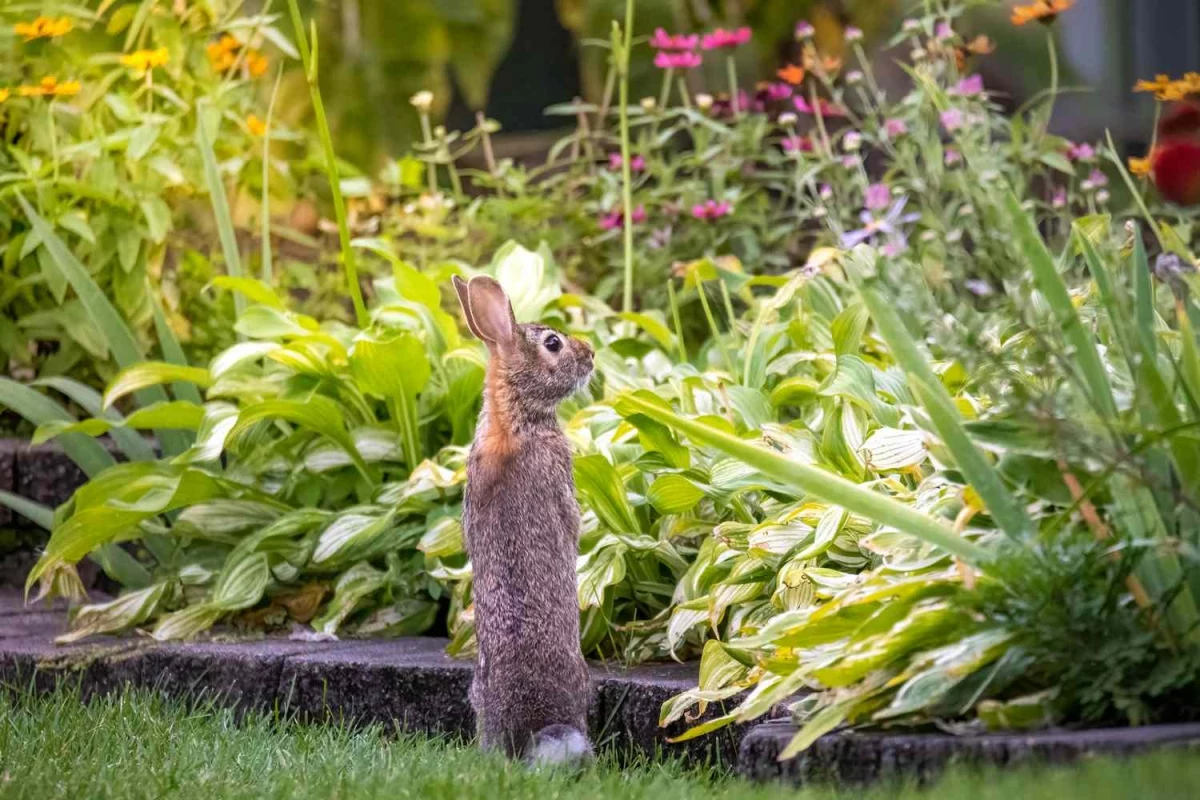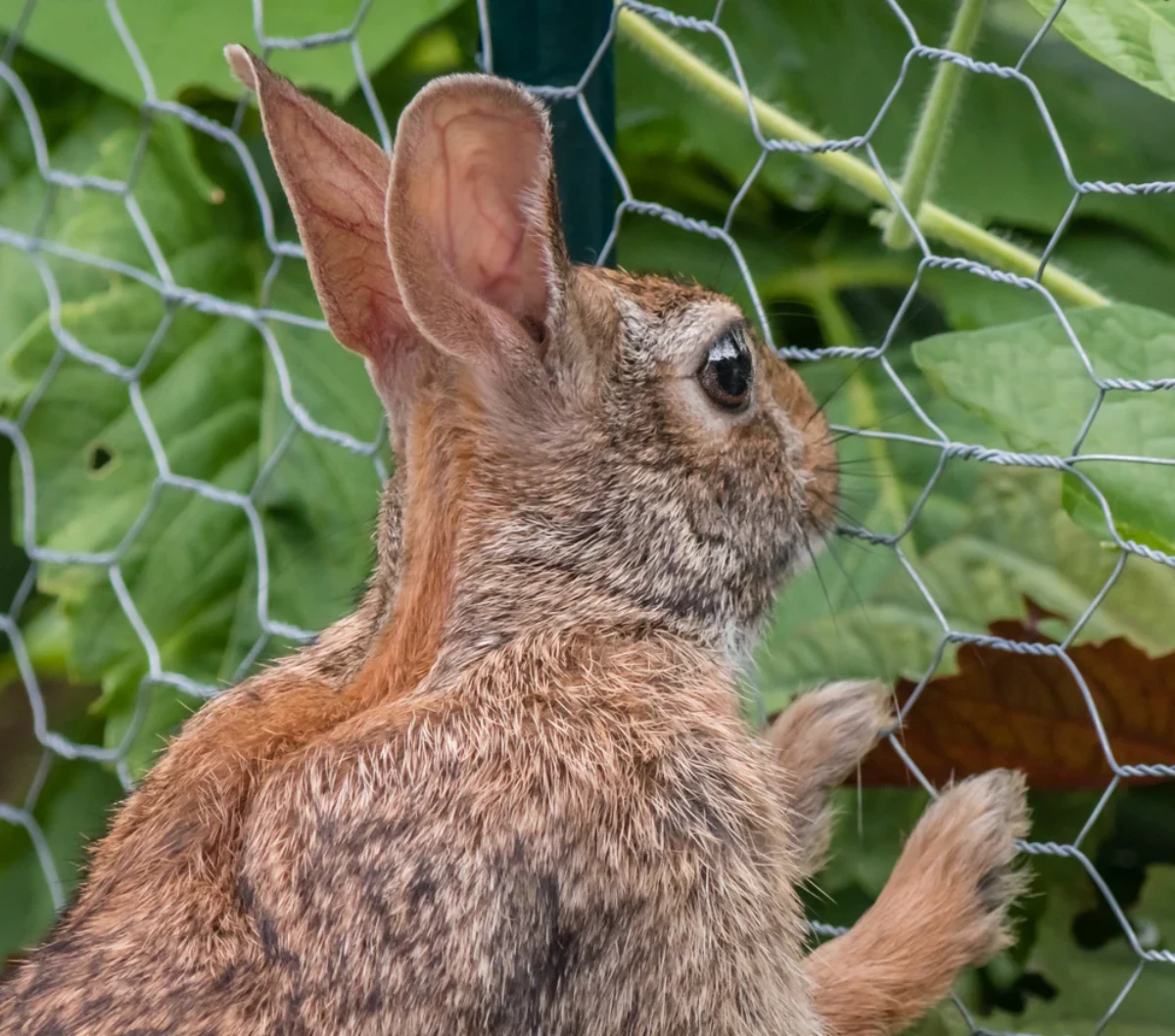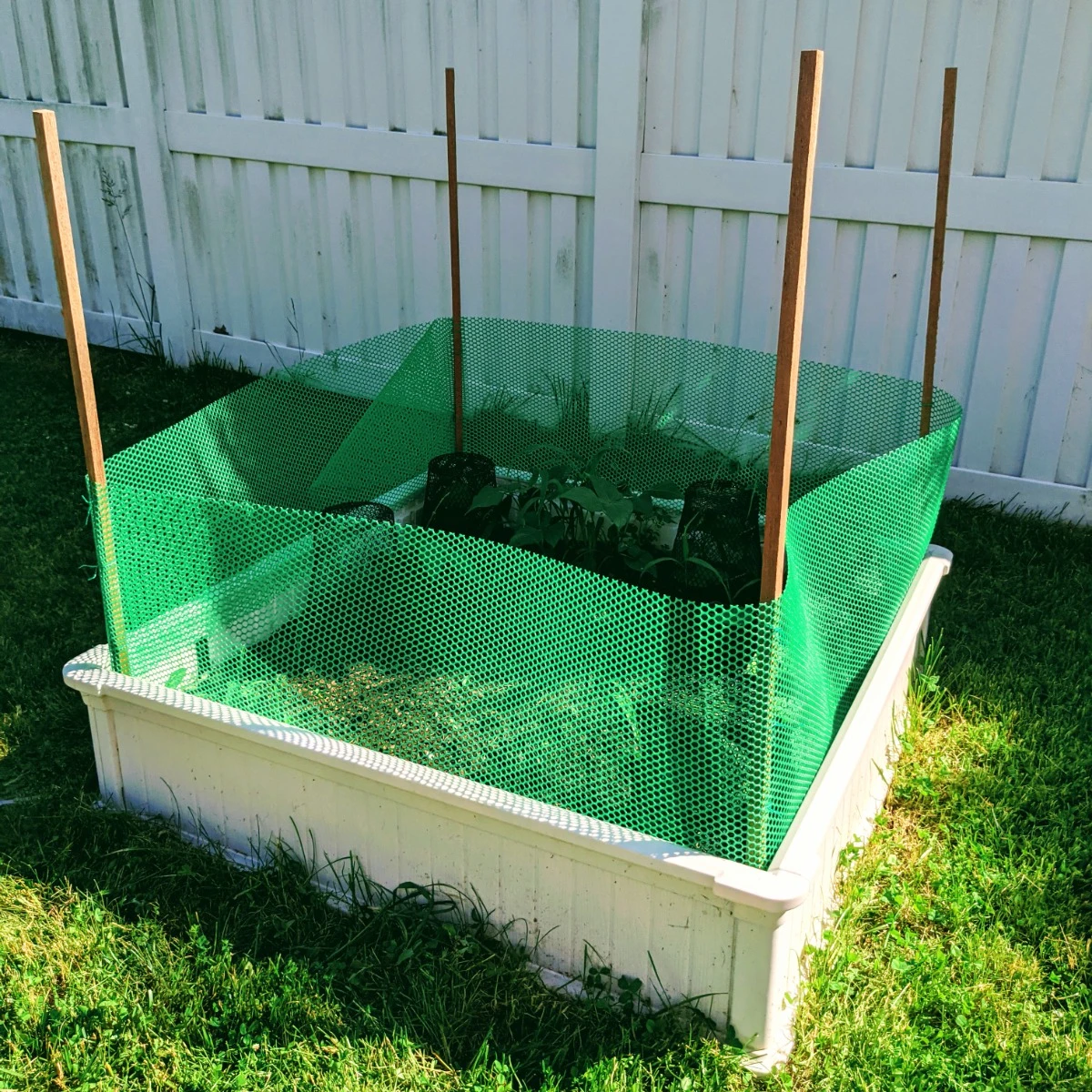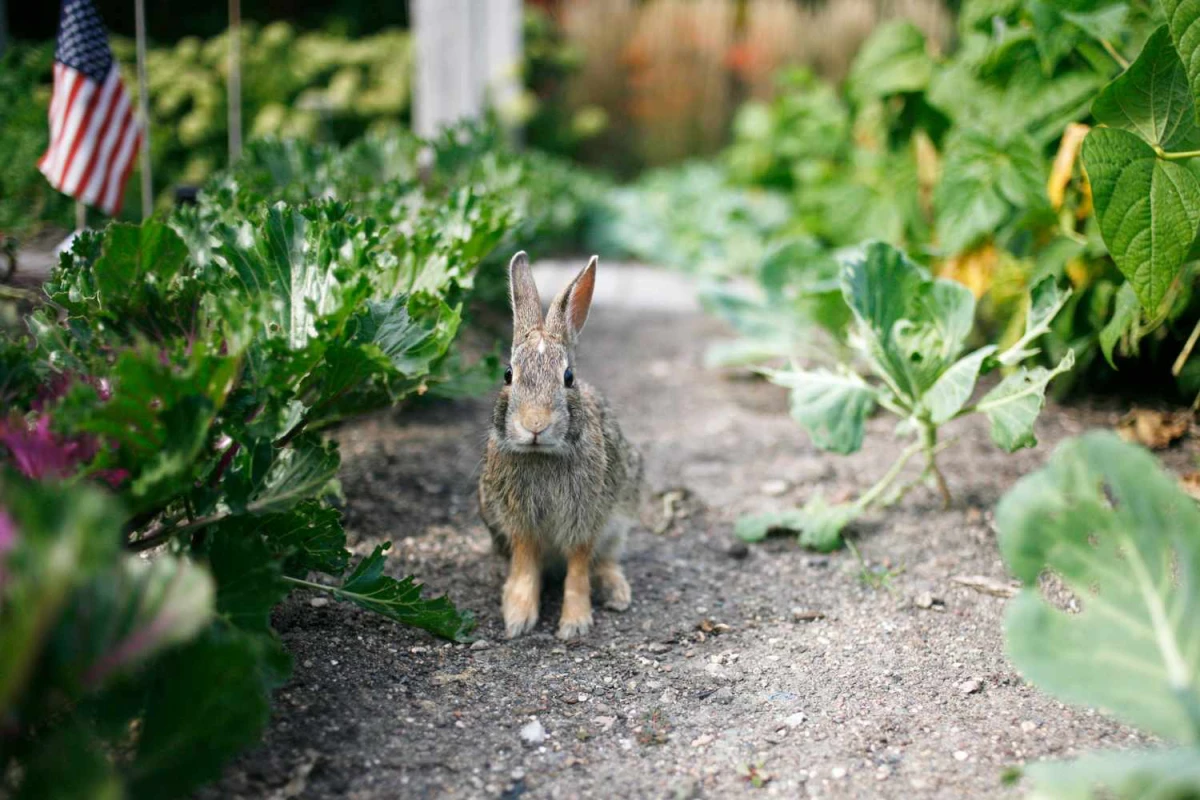How to Rabbit-Proof Your Garden: A No-Nonsense Guide
I’ve been deep in the world of garden design and maintenance for years, and let me tell you, I’ve seen it all. I’ve watched clients lose hundreds, sometimes thousands, of dollars in beautiful plants literally overnight. The culprits? Deer, groundhogs, and the most persistent little offender of all: the common rabbit.
In this article
I’ll never forget one beautiful perennial garden we’d just finished installing. The very next morning, I got a frantic call. Nearly every single Heuchera—a plant that was the star of the show—was chewed down to a sad little nub. There was no mystery about who did it. Those clean, 45-degree angle cuts on the stems are a rabbit’s signature. It was a tough lesson that underestimating these fluffy-tailed menaces is a mistake.
Look, dealing with rabbits isn’t about being mean to a cute animal. It’s about protecting the time, money, and heart you pour into your garden. The key isn’t some magic spray; it’s a smart, layered strategy. It starts with understanding how they think and ends with creating barriers they simply can’t beat. This is the system the pros use, and I’m going to walk you through it.

First, Know Your Opponent
Before you can win the battle, you have to understand the adversary. Knowing their habits is half the work, telling you what to look for, when to be vigilant, and why some tactics are way more effective than others.
Identifying the Intruder and Their Handiwork
In most gardens, you’re dealing with the Eastern Cottontail. They’re super adaptable and just love the suburban mix of open lawns and dense shrubs that we create for them. Out west, in more open country, you might also be up against jackrabbits, which are a whole other level of big.
The most crucial skill is learning to spot their damage. Rabbit damage is unmistakable. They use their sharp front teeth to make a perfect, clean, angled snip on stems, almost like a pair of tiny garden shears did the job. This is completely different from deer damage, which looks shredded and torn because deer have to rip and pull at plants.

Oh yeah, and you’ll also find their droppings—small, round, pea-sized pellets left in little piles. If you see those, you have confirmation they’re visiting, even if you never spot them.
When Are They Most Active?
Rabbits are most active at dawn and dusk. These low-light hours give them cover from predators, which is why your garden often looks fine when you go to bed and devastated when you wake up. Their menu also changes with the seasons.
- Spring & Summer: They go for all the tender, juicy stuff. Think new perennial shoots, vegetable seedlings like beans and lettuce, and flowers like pansies and tulips.
- Fall & Winter: Once the green stuff is gone, they pivot to woody plants. They’ll gnaw the thin bark off young trees and shrubs, a practice called girdling. This is incredibly destructive. If they chew a complete ring around a trunk, they cut off the plant’s nutrient flow, and it’s game over for that tree.
Understanding this seasonal shift is huge. Protecting your summer veggie patch won’t do a thing to save your new apple trees in the winter.

The Gold Standard: A Truly Rabbit-Proof Fence
Ask any landscape pro for the one guaranteed way to stop rabbits, and they’ll all say the same thing: a proper fence. But here’s the catch—many DIY fences fail because of a few overlooked details. It’s not just about height; it’s about the material, the depth, and securing the weak spots.
Choosing the Right Stuff (and Avoiding the Wrong Stuff)
Let’s be blunt: that flimsy chicken wire (or poultry netting) from the big box store is not a real solution. Rabbits can and will chew right through it, and it rusts out in a couple of years. You’ll just be redoing it later.
For a fence that actually lasts, you need 1/2-inch or 1/4-inch galvanized hardware cloth. This is a heavy-gauge, welded wire mesh that’s incredibly tough. The galvanization protects it from rust for ages. Honestly, it’s worth every penny. You can even find vinyl-coated versions that cost a bit more but will probably outlast your garden shed. Expect to pay around $50 to $70 for a 2-foot by 50-foot roll at a place like Home Depot or Lowe’s. The vinyl-coated stuff might be 20% more, but in my opinion, it’s worth it for the longevity.

How to Install It Like a Pro
A great fence is all in the installation. I’ve seen too many people spend the money on good materials only to fail on the setup.
- Height: For cottontails, your fence needs to be at least 24 inches tall above the ground. I personally prefer 30 inches just to be safe. That’s high enough to stop them from hopping over.
- Depth (The Non-Negotiable Part): This is where most people go wrong. Rabbits are diggers! You MUST bury the bottom of the fence at least 6 inches deep. If you have really loose, sandy soil, I’d even go 8 to 12 inches down.
- The L-Footer (A Pro-Level Trick): To make your fence completely dig-proof, bend the bottom 6 inches of the hardware cloth outward, away from the garden, at a 90-degree angle. Lay this flat in the bottom of your trench before you backfill it. When a rabbit tries to dig down at the fence line, its paws hit this buried mesh, and it can’t go any further. It’s a game-changer.
- Secure Your Gates: A gate is the weakest link. Make sure there’s no gap at the bottom—it needs to be less than an inch. You can easily attach a small strip of hardware cloth or even a solid board to the bottom of the gate to close that space.
Heads up! Installing a fence like this is work. It means digging a trench around the entire area. For a small 10×15 foot garden bed, you can get it done. To give you a rough idea, for a bed that size, you’re looking at a 50ft roll of 36-inch hardware cloth (around $60), a half-dozen metal T-posts (about $30), and a bag of heavy-duty zip ties ($5). So, a permanent fix for about $100 and your time. For two people, digging the trench and installing it should take a solid afternoon. If you’re flying solo, plan for a full weekend. But the peace of mind is priceless.

Targeted Protection & Quick Fixes
Sometimes a full perimeter fence is overkill. If you just need to protect a few prized plants or a single raised bed, you can get more specific.
Individual Plant Cages & Raised Bed Armor
For young trees and shrubs, simple cages made from that same galvanized hardware cloth are perfect. Just form a cylinder wide enough that it doesn’t touch the plant, and press it a few inches into the soil. Trust me on this one: I once tried to save $30 by using cheap plastic deer netting around my lettuce. I woke up the next morning to find the rabbits had just chewed clean holes right through it. Lesson learned.
By the way, if you have raised beds (or are planning to build some), here’s a golden tip: before you add the soil, staple a layer of hardware cloth to the bottom of the wooden frame. It’s the easiest, most permanent way to keep rabbits and gophers from burrowing up from below.

What Can I Do RIGHT NOW? Emergency Fixes!
Okay, so your pansies got munched and you can’t get to the hardware store until Saturday. What do you do tonight? You need a temporary fix, fast.
- The Laundry Basket Trick: For small seedlings or a new plant, just pop an upside-down laundry basket or milk crate over it. It looks silly, but it works for a night or two.
- Cayenne Pepper Barrier: Go into your kitchen and grab the cayenne pepper. Sprinkle a heavy-handed ring of it on the ground around your most vulnerable plants. They hate the smell and the taste if they get it on their paws. You’ll have to reapply after rain, but it’s a great short-term deterrent.
Making Your Yard Less of a Rabbit Paradise
Rabbits are prey animals, so their whole world revolves around finding cover. You can make your property a lot less inviting by tidying up.

- Clean Up Brush Piles: This is basically a pre-built rabbit hotel. Get rid of them.
- Manage Weeds & Tall Grass: Overgrown areas are a buffet and a hideout. Keep things mowed.
- Seal Off Decks and Sheds: The space under a deck or shed is a prime nesting spot. You can block access using hardware cloth, attaching it to the base of the structure and burying it in an L-shape, just like with a fence.
Of course, this won’t stop a determined rabbit from making a mad dash for your tasty veggies, but it will lower the overall number of rabbits who decide to call your yard home.
The Truth About Repellents and Scare Tactics
The market is flooded with products promising to keep rabbits away. In my experience, these are the least reliable tools and should be seen as temporary aids, not solutions. Their effectiveness is all over the place.

Most repellents are either scent-based (putrescent egg, coyote urine) or taste-based (hot pepper wax). They can work for a bit, but rabbits are smart and can get used to them. Here’s a pro tip I give everyone: if you’re going to use scent repellents, buy two different brands with different active ingredients. Switch them out every few weeks. This keeps the scent novel and confusing for them.
As for motion-activated sprinklers, shiny tape, and pinwheels? They work on the principle of novelty. A rabbit might be startled the first few times, but they quickly learn it’s not a real threat. It might buy you a few days, but that’s about it.
Ultimately, managing wildlife is just part of being a gardener. It takes some observation and a willingness to invest in real, physical solutions. By focusing on proven techniques like proper fencing and supplementing that with a tidy landscape, you can finally protect your hard work and enjoy the garden you set out to create.











